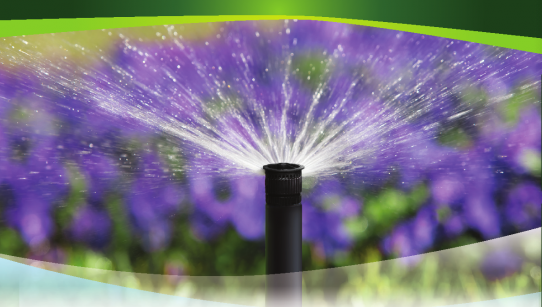Fog Harvesting: Exploring the Fundamentals for Water-Scarce Agriculture
Fog harvesting, an innovative water collection method, leverages atmospheric moisture to address water scarcity, particularly in agriculture
Fog harvesting, a sustainable water collection method, harnesses atmospheric moisture in fog-rich regions to address water scarcity challenges, particularly in agriculture. This innovative approach involves the capture and conversion of tiny water droplets into liquid form, with a primary focus on providing a supplementary water source for irrigation. The science behind fog harvesting centers on condensation principles and specialized structures, such as fog nets and mesh panels, strategically placed in fog-prone areas. This discussion delves into the technical aspects of how fog harvesting works, factors influencing its efficiency, and its application in alleviating water-related agricultural challenges.
Understanding Fog Harvesting
Fog harvesting is a sustainable and innovative water collection method that capitalizes on the moisture present in fog to provide a valuable water resource, particularly in regions with limited access to conventional water sources. The concept behind fog harvesting lies in the capture and collection of tiny water droplets suspended in fog, converting them into liquid water that can be utilized for various purposes, including irrigation.
Fog harvesting operates on the principles of condensation, utilizing the natural process by which water vapor in the air forms tiny droplets. In areas where fog is prevalent, specialized structures such as fog nets or mesh panels are strategically placed to intercept the fog as it drifts through the atmosphere. Mesh panels can vary in size. For instance, in a fog harvesting research project conducted by the University of South Africa, the panels measured 70 m². In Yemen, a set of 26 small Standard Fog Collectors (SFC), each measuring 1 m², were constructed. The material used for the mesh is usually nylon, polyethylene or polypropylene netting (also known as ‘shade cloth’) which can be produced to various densities capable of capturing different quantities of water from the fog that passes through it. These structures are typically installed in locations with high fog frequency, such as coastal or high-altitude regions, where atmospheric moisture is abundant.
The key to fog harvesting lies in the design of the collecting material. Fog nets and mesh panels are made from hydrophilic materials, meaning they attract and retain water. This property encourages the tiny water droplets present in the fog to adhere to the surfaces of the collecting structure. As the fog passes through, the droplets accumulate on the mesh or netting, and due to natural collisions, they coalesce into larger droplets.
Once these droplets reach a critical size, they overcome the forces holding them in the air and begin to drip down the collecting material. Gravity facilitates the flow of these larger droplets, and they are directed into a collection system at the bottom of the fog-harvesting structure. This system may consist of gutters, pipes, or other channels designed to efficiently gather and channel the condensed water into a storage container. The collected water is then ready for use, whether it be for drinking, agricultural irrigation, or other purposes.
Factors Influencing Fog Harvesting Efficiency
One of the key factors influencing the efficiency of fog harvesting is the location of the installation. Coastal areas and high-altitude regions with frequent fog are ideal for fog harvesting, as they offer a consistent source of moisture. Additionally, the climate plays a crucial role, as regions with low humidity may not yield sufficient amounts of fog for harvesting. The effectiveness of fog harvesting is also influenced by the type and density of fog, with dense fog providing more substantial water collection.
Climate and weather patterns further impact the success of fog harvesting initiatives. The frequency and intensity of fog events, as well as seasonal variations, can affect the overall water yield. Therefore, understanding the local climatic conditions is essential for optimizing the design and placement of fog harvesting infrastructure.
Infrastructure is another significant factor affecting fog harvesting efficiency. The design and material of the nets or meshes, their orientation, and the presence of obstacles that may obstruct fog flow all play roles in determining the success of fog harvesting systems. Regular maintenance of these structures is crucial to ensure their longevity and sustained performance.
Fog-Prone Areas and Agricultural Challenges
Coastal areas and high-altitude regions are often characterized by high levels of atmospheric moisture, leading to frequent occurrences of fog. In various parts of the world, from the coastal areas of Chile to the highlands of Ethiopia, fog-prone zones have been identified as suitable locations for implementing fog harvesting systems. These areas present an opportunity to harness atmospheric moisture and address water scarcity issues that often plague agricultural communities.
Farmers in fog-prone regions face significant challenges related to water scarcity, which directly impact their ability to cultivate crops and sustain livelihoods. Traditional water sources, such as rivers and groundwater, may be insufficient or unreliable due to erratic rainfall patterns or prolonged droughts. In fog-prone areas, the availability of water is often concentrated in the form of atmospheric moisture, and harnessing this resource becomes vital for agricultural sustainability.
The need for alternative water sources in fog-prone areas is evident in the context of agriculture, where water is a critical input for crop growth. Fog harvesting emerges as a promising solution to complement traditional water sources, offering an additional and sustainable supply for irrigation. By capturing water from fog, farmers can reduce their reliance on unpredictable rainfall patterns and adapt to changing climate conditions. Fog harvesting systems can be integrated into existing agricultural practices, providing a reliable water source during dry periods and contributing to increased crop yields.
Furthermore, fog harvesting aligns with the principles of sustainable water management, as it taps into a renewable resource without depleting finite water reserves. This is particularly relevant in regions where over-extraction of groundwater or depletion of surface water sources has led to environmental degradation.
Benefits of Fog Harvesting
1. Drought Resilience: Fog harvesting provides a supplementary and reliable water source for agriculture, particularly in fog-prone areas, reducing dependence on rainfall and mitigating the impact of droughts on crop yields.
2. Irrigation Support: One of the primary benefits is the potential for irrigation. Fog harvesting systems offer a consistent water supply, enabling farmers to irrigate their crops even during dry periods, ultimately improving agricultural productivity.
3. Water Conservation: Fog harvesting is an environmentally friendly method that conserves water by capturing atmospheric moisture, minimizing the need for traditional water extraction from rivers and groundwater, which can be unsustainable in some regions.
4. Renewable Resource: Fog harvesting taps into a renewable resource – atmospheric moisture – ensuring a continuous supply of water without depleting finite water reserves, contributing to sustainable agricultural practices.
5. Crop Diversification: The availability of additional water through fog harvesting allows farmers to diversify their crops. This can lead to increased income and food security by cultivating a variety of crops suited to local market demands.
6. Cost Savings: Fog harvesting can result in cost savings for farmers, as they may rely less on expensive irrigation infrastructure or the purchase of water during water-scarce periods, contributing to the economic sustainability of agriculture in fog-prone regions.
7. Climate Adaptation: Fog harvesting helps farmers adapt to changing climate conditions by providing a consistent and predictable water source. This adaptability is crucial in regions where traditional weather patterns are becoming increasingly unpredictable.
8. Reduced Environmental Impact: Unlike some conventional water extraction methods, fog harvesting has a minimal environmental impact. It reduces the need for large-scale water infrastructure projects and helps preserve ecosystems that may be negatively affected by traditional water extraction.











No comments yet